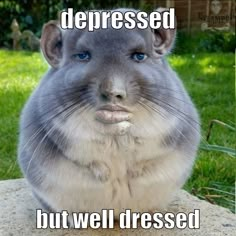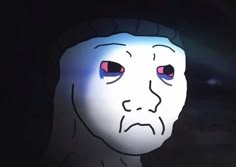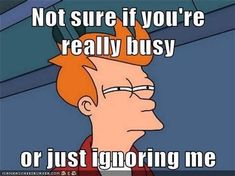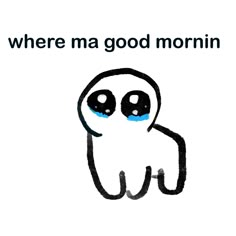Decoding the Sad Meme: A Cultural Phenomenon
Summary
This blog post explores the phenomenon of sad memes, examining their origins, functionality, target audience, and potential impact. It delves into how these memes use humor and relatability to express and share feelings of sadness in the digital age, while also addressing potential downsides and future trends.
The Anatomy of a Sad Meme: A Deep Dive
The internet, a vast landscape of shared experiences, has given rise to a unique form of communication: the meme. Among the countless variations, the "sad meme" holds a particularly interesting position. It's not just about humor; it's about expressing, sharing, and even coping with sadness in a digital age.
What Exactly Is a Sad Meme?
A sad meme, at its core, is an image, video, or text-based content that uses humor, irony, or relatability to convey feelings of sadness, melancholy, or disappointment. It's not necessarily about making people laugh out loud; instead, it aims to create a sense of understanding and shared experience. Think of it as a digital hug for the emotionally weary.
Unlike purely comedic memes, sad memes often tap into deeper emotions. They can range from lighthearted expressions of everyday frustrations (like a cat looking forlornly at an empty food bowl) to more profound reflections on loneliness, loss, or existential angst. The key is the juxtaposition of sadness with humor or relatable scenarios.
The Evolution of Digital Sadness
The concept of expressing sadness online isn't new. Early internet forums and blogs were filled with personal stories and emotional outpourings. However, the meme format provided a more concise and easily shareable way to communicate these feelings. The rise of social media platforms like Tumblr, Reddit, and Twitter further amplified the reach and popularity of sad memes.
Over time, specific images and characters became associated with sadness. Distracted Boyfriend, Drake Posting, and Wojak (often depicted as Feels Guy) are just a few examples. These images, combined with relatable captions, became shorthand for expressing a wide range of negative emotions.
How Sad Memes Function: Relatability and Catharsis
The power of the sad meme lies in its relatability. When someone encounters a meme that perfectly captures their current mood, it creates a sense of validation and connection. It's a reminder that they're not alone in their feelings. This shared experience can be incredibly comforting, especially during times of isolation or emotional distress.
Furthermore, sad memes can provide a form of catharsis. By externalizing and humorizing negative emotions, they can help individuals process and cope with difficult feelings. It's a way of saying, "Yes, this sucks, but at least we can laugh about it (or at least acknowledge it) together."
Who Uses Sad Memes? The Target Audience
While sad memes can resonate with a broad audience, they tend to be particularly popular among younger generations, especially teenagers and young adults. This demographic is often more open to expressing their emotions online and more likely to use internet humor as a coping mechanism.
However, it's important to note that sad memes are not exclusively for young people. Anyone who has experienced sadness, disappointment, or frustration can find solace and connection in these digital expressions.
Key Characteristics and Functionality
- Relatability: The core function is to present scenarios or feelings that others can identify with.
- Humor (often dark or ironic): The humor acts as a buffer, making the sadness more palatable and accessible.
- Conciseness: Memes are typically short and to the point, allowing for quick consumption and sharing.
- Visual Appeal: The use of images, videos, or GIFs enhances the emotional impact and memorability.
- Shareability: Memes are designed to be easily shared across various online platforms, fostering a sense of community.
The Underlying Technology: Image Editing and Social Sharing
Creating and sharing sad memes relies on readily available technology. Image editing software (like Photoshop or even free online meme generators) allows users to add text and manipulate images. Social media platforms provide the infrastructure for distributing and consuming memes on a massive scale.
The key innovation isn't necessarily in the technology itself, but in the creative application of these tools to express complex emotions in a simple and relatable way. The meme format democratizes emotional expression, allowing anyone with a smartphone and an internet connection to participate in the conversation.
Potential Downsides and Considerations
While sad memes can be a positive force for emotional connection and catharsis, it's important to acknowledge potential downsides. Over-reliance on memes as a coping mechanism could potentially hinder genuine emotional processing and problem-solving. It's crucial to balance online expression with real-life support and healthy coping strategies.
Furthermore, some sad memes can perpetuate negative stereotypes or promote unhealthy behaviors. It's important to be mindful of the content being shared and to avoid memes that glorify self-harm, depression, or other serious mental health issues. Like our friends in the mental health community always say, seek professional help when needed.
The Future of Sad Memes
The sad meme is likely to continue evolving as internet culture shifts and new technologies emerge. As AI-powered meme generators become more sophisticated, we may see even more personalized and nuanced expressions of sadness online. The fundamental need for emotional connection and shared experience will likely ensure the continued relevance of the sad meme in the digital age.
In conclusion, the sad meme is more than just a fleeting internet trend. It's a reflection of our shared human experience, a testament to our ability to find humor and connection even in the face of sadness. It's a digital reminder that we're all in this together, one meme at a time.








